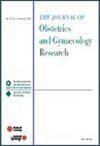Evaluation of intraoperative lidocaine on the prevention of postoperative shoulder pain in gynecologic laparoscopy: A prospective randomized, double-blind, placebo-controlled study
Abstract
Aim
To assess the effectiveness of intraoperative lidocaine in reducing the incidence of post-laparoscopic shoulder pain (PLSP) after gynecologic laparoscopy.
Methods
Patients undergoing total laparoscopic hysterectomy were randomly divided into two groups: the lidocaine group, receiving an initial intravenous dose of lidocaine (1.5 mg/kg) before anesthesia induction, followed by a continuous infusion at 2 mg/kg/h, and the placebo group, receiving saline. The primary endpoint was the determination of PLSP incidence over a 72-h period post-surgery. Secondary endpoints included a comprehensive evaluation of pain intensity, as measured by the Numeric Rating Scale (NRS), for shoulder, abdominal, and incisional pain within a 72-hour period postoperatively. Additionally, the endpoints involved the assessment of Lofencodeine or Parexib Sodium usage frequency, incidence of nausea and vomiting, duration of anesthesia and surgical procedure, as well as the duration of hospital stay.
Results
Our study did not demonstrate any significant benefit in the incidence of PLSP during the postoperative period. PLSP occurred in 14 out of 41 patients (34.1%) in the lidocaine group, compared with 15 out of 41 patients (36.6%) in the placebo group (p = 0.817). Intravenous lidocaine reduced abdominal pain scores and decreased the need for postoperative analgesics within 72 h after surgery. No significant differences were found in incisional and shoulder pain intensity, nausea and vomiting rates, or hospitalization duration between groups.
Conclusions
The infusion of lidocaine did not yield a reduction in the incidence or severity of PLSP in patients undergoing laparoscopic total hysterectomy.

 求助内容:
求助内容: 应助结果提醒方式:
应助结果提醒方式:


